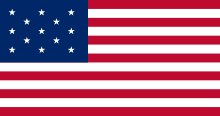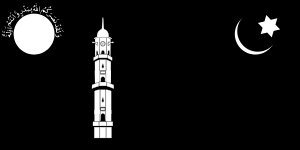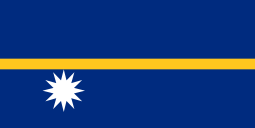Star polygons in art and culture
Star polygons are the basis for numerous figures of significance in arts and culture. The figure may be the border or interior of the polygon, or one or more closed polygonal paths that include all of the border and also have some legs crossing the interior. Impressions of astronomical stars provide the term, but specific uses may exploit the connection or not. Stars often represent the unity of states within a country when they are used as a part of the flag.
Emblematic use
- In heraldry, a mullet is a star with straight arms and typically five points. A star with wavy rather than straight rays is called an estoile.[1] The mullet, used as an heraldic charge, is the ensign of knightly rank, and every order of knighthood incorporates this symbol in some way. It has traditionally been used in British heraldry as a mark of cadency for the third son.[2]
- In Christian art, St. Bruno bears a star on his breast; Saint Dominic, Saint Humbert and Saint Peter of Alcantara have a star on their head or forehead.[3]
- The star with six (or less commonly five, sometimes seven) points is associated with law enforcement in the United States, and forms the basis of the sheriff's badge.
Five-pointed stars

The five-pointed star, if drawn with points of equal length and angles of 36° at each point, is sometimes termed a golden five pointed star.[4] If the colinear edges are joined together a pentagram is produced, which is the simplest of the unicursal star polygons, and a symbol of mystical and magical significance. Originally, the five-pointed star (pentangle), forming a pentagram within it, represented the ten tribes of Israel that broke away from the ruling class of Judah, Benjamin, and the Priests. There are ten "Vav" or "man" that form the five points. A circle was also added around the Israelite Star because it was the letter "Samek" meaning, "death". Today's modern Pagans tend to use all three symbols, rather than making any distinction. The golden five-pointed star is a very common ideogram in the western world, and has particularly strong associations with military power and war. The Asian giant LG Corporation's initials actually stand for "Lucky Goldstar" (and not "Life is Good" as many Westerners are led to believe). Many communist countries (such as China and Vietnam) and symbols (the hammer and sickle) also incorporate five-pointed stars.
The five-pointed star appears in the flags of 35 countries, and also appears commonly in the heraldry of the United States, and stands in contrast to the vexillologically rarer seven-pointed star.
The five-pointed star occurs in conjunction with a crescent in the flags of several countries to symbolize Islam, appearing for example as part of the symbol of the Ottoman Empire.
In philately the five-pointed star signifies stamps that have not been postmarked.
The five-pointed star is used as the symbol of the People Nation alliance of gangs from Chicago. Blood gangs who originated from New York known as the United Blood Nation also use this as a symbol as they have emulated the People Nation alliance.

In the Armenian Pantheon, there is a goddess called Astlik/Astghik. In the Armenian language Astgh means star, Astghik - Little Star. Compared with Ishtar, Astara, this goddess' sign should have been the (probably)eight-pointed star.
 The pentagram, a five-pointed star drawn with five straight strokes
The pentagram, a five-pointed star drawn with five straight strokes The star and crescent symbol is mostly shown with five-pointed stars in modern flags, but in the oldest Ottoman flag of this design as well as the flag of Azerbaijan, the star is eight-pointed.
The star and crescent symbol is mostly shown with five-pointed stars in modern flags, but in the oldest Ottoman flag of this design as well as the flag of Azerbaijan, the star is eight-pointed. The 1777 Flag of the United States had 13 stars of an unspecified number of points[5]
The 1777 Flag of the United States had 13 stars of an unspecified number of points[5]
Six-pointed stars
Several varieties of six-pointed stars are used in Western culture:

- If the collinear edges of a regular six-pointed star are connected, so that two interlaced triangles are formed, a symbol results that is variously known as the hexagram, Star of David, or Shield of David (Magen David). This symbol is most commonly associated with Judaism; it is also used in Christianity and Islam and Hinduism, but on a less frequent basis. The six-points represent all twelve patriarchs (Vav or Man) or tribes. One unlikely theory claims that the two "Triangles" are actually the letters "Dalet" ﬢ and "Yod" י, the two letters assigned to Judah יְהוּדָ֑ה. Note that they do NOT look anything like the Star. The two triangles form a diamond, which is the gem assigned to Judah. These letters are found in the assigned zodiac of Leo.

- The Ahmadiyya flag, Lawa-e-Ahmaddiyat contains a six-pointed star, adjacent to a crescent.
- The Star of Life, which is a six-armed cross.

- The Great Seal of the United States contains a six-pointed star made up of 13 stars (representing the original 13 colonies).
- The municipal flag of Chicago has four six-pointed stars.
- German and German-American hex signs and barn stars often incorporate both five- and six-pointed stars as central themes.
- The six-pointed star is used as the symbol for Folks Nation alliance of gangs from Chicago. Crip gang members tend to use this symbol also.
Apart from the foresaid mentions, six-pointed star formations are rare as an ideograph in Western cultures except in the case of law enforcement badges.[6] In astrology some formations of a six-pointed star can signify fixed stars. In some rare instances it can signify the date of birth on a gravestone, synonymous with the five-point star.
Seven-pointed stars
Political
A seven-pointed star appears in the flag and heraldic symbolism of Australia. In the Australian context, the seven points (also known as the Commonwealth Star, the Federation Star, the Seven Point Star, or the Star of Federation) is a seven-pointed star symbolising the Federation of Australia which came into force on 1 January 1901. Six points of the Star represent the six original states of the Commonwealth of Australia, while the seventh point represents the territories.
The seven-pointed stars stand in contrast to the vexillologically more conventional five-pointed stars.
The Seal of the Cherokee Nation has an acute gold seven-pointed star in its seal.
The seven-pointed star is also used as a symbol of the Trinitarios gang from New York City.
Heptagram
A heptagram or septagram is a seven-pointed star drawn with seven straight strokes. There are two kinds of heptagrams:
- Acute heptagram, the {7/3} star polygon.
- Obtuse heptagram, the {7/2} star polygon.
Eight-pointed stars
Political
.svg.png)

 flag of Ha'il state (1834-1921)
flag of Ha'il state (1834-1921)
Other
The Eight Star used widely in the Arabic states as beautification, sometimes a similar star to the Star of Lakshmi also consider as the Arabic star.
A two-color, 8-pointed star associated with the American Friends Service Committee and other Quaker service groups since the 1870s is sometimes called "the Quaker star".
Nine-pointed stars
A nine-pointed star is the most common symbol of the Baha'i Faith, the number nine being significant in the religion.
Twelve-pointed stars
The flag of Nauru uses a twelve-pointed star representing the 12 tribes on the island.
Fourteen-pointed stars
The flag of Malaysia uses the Federal Star, a fourteen-pointed star representing the unity between the 13 member states and the federal government.
See also
References
- ↑ Fox-Davies, Arthur Charles; Graham Johnston (2004) [1909]. A Complete Guide to Heraldry. Kessinger Publishing. pp. 295–296. ISBN 1-4179-0630-8.
- ↑ Volborth, Carl Alexander von (1981). Heraldry: Customs, Rules and Styles. Poole, England: Blandford Press. p. 80. ISBN 0-7137-0940-5.
- ↑ Brewer, E. Cobham. "Star". The Dictionary of Phrase and Fable. Ware, Hertfordshire: Wordsworth Editions Ltd. ISBN 1-85326-300-1.
- ↑ The five-pointed star from Liungman, Carl G. (2004). Symbols: Encyclopedia of Western Signs and Ideograms. HME Publishing. ISBN 91-972705-0-4.. Retrieved 19 July 2006.
- ↑ "The History of the Stars and Stripes". Federal Citizen Information Center. Retrieved 2009-09-15.
- ↑ The sixpointed star from Liungman, Carl G. (2004). Symbols: Encyclopedia of Western Signs and Ideograms. HME Publishing. ISBN 91-972705-0-4.. Retrieved 19 July 2006.
Graham, Dr. O.J. The Six-Pointed Star: Its Origin and Usage 4th ed. ISBN 0-9689383-0-2
External links
| Wikimedia Commons has media related to Star symbol. |
- Moroccan Islamic Patterns: The Eight-Point Star Examining the symbolic meaning of the eight-point star (khatam) in Islamic ornamentation.




.svg.png)





